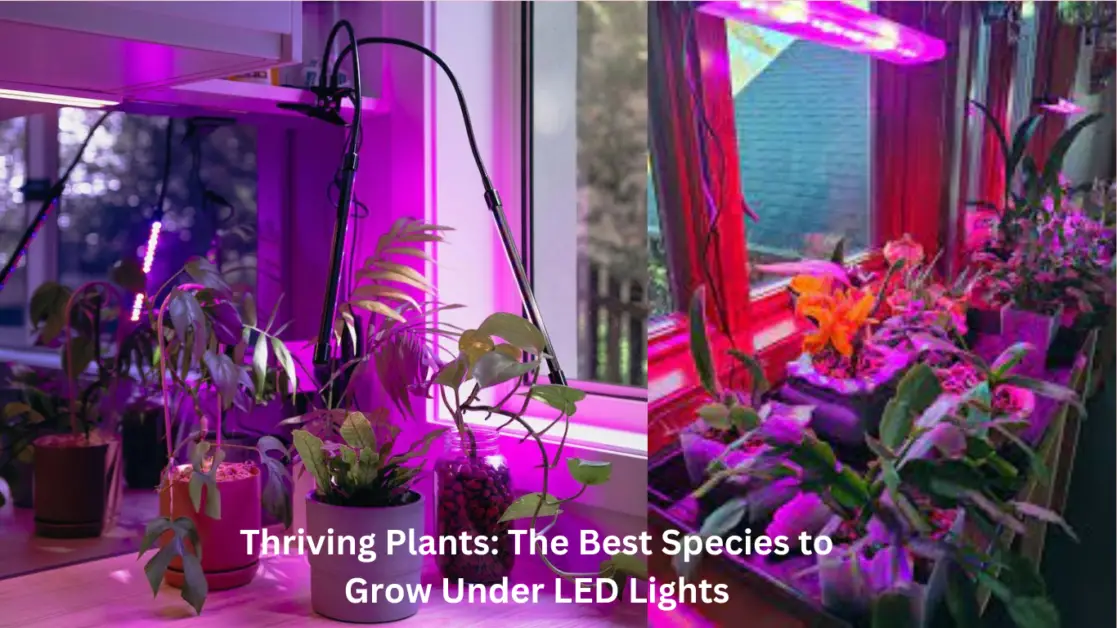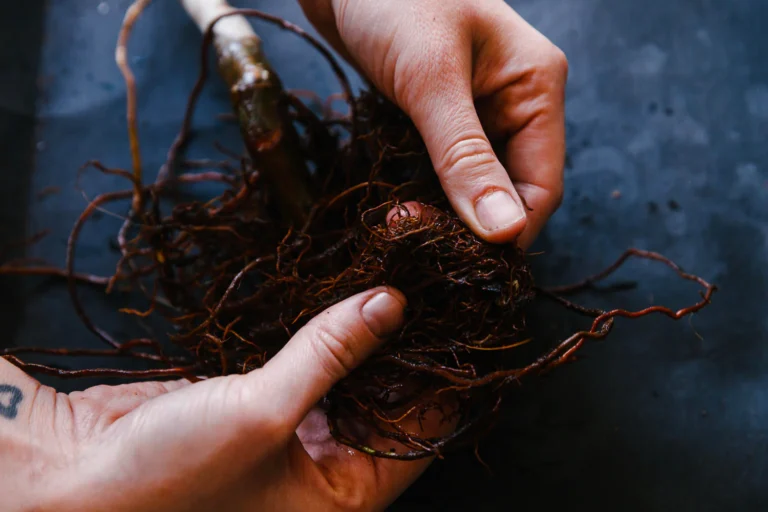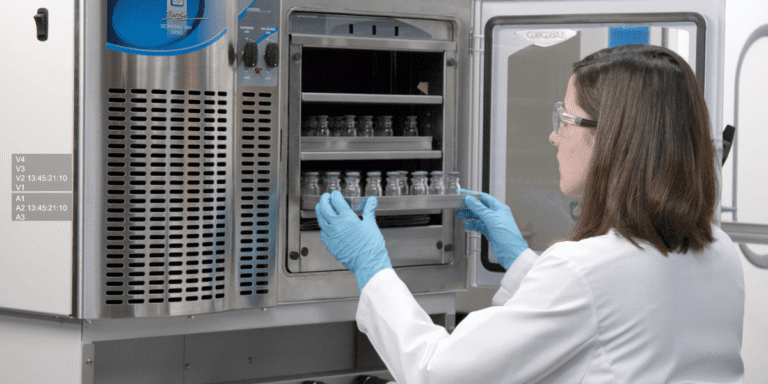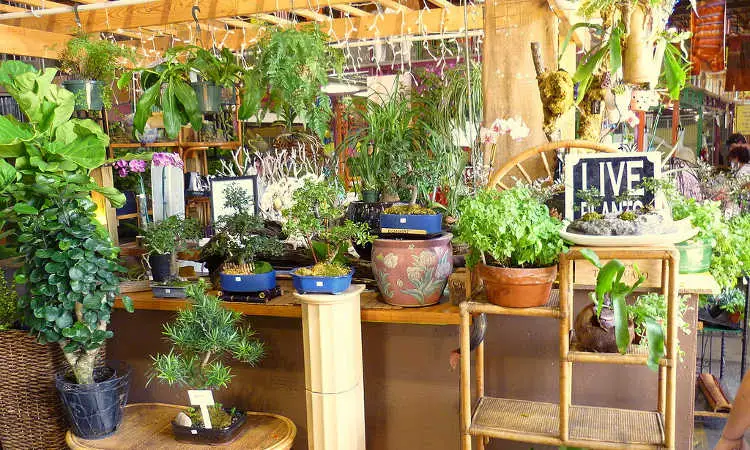Thriving Plants: The Best Species to Grow Under LED Lights
Table of Contents: Thriving Plants
Understanding the Benefits of LED Lights for Indoor Growth Thriving Plants
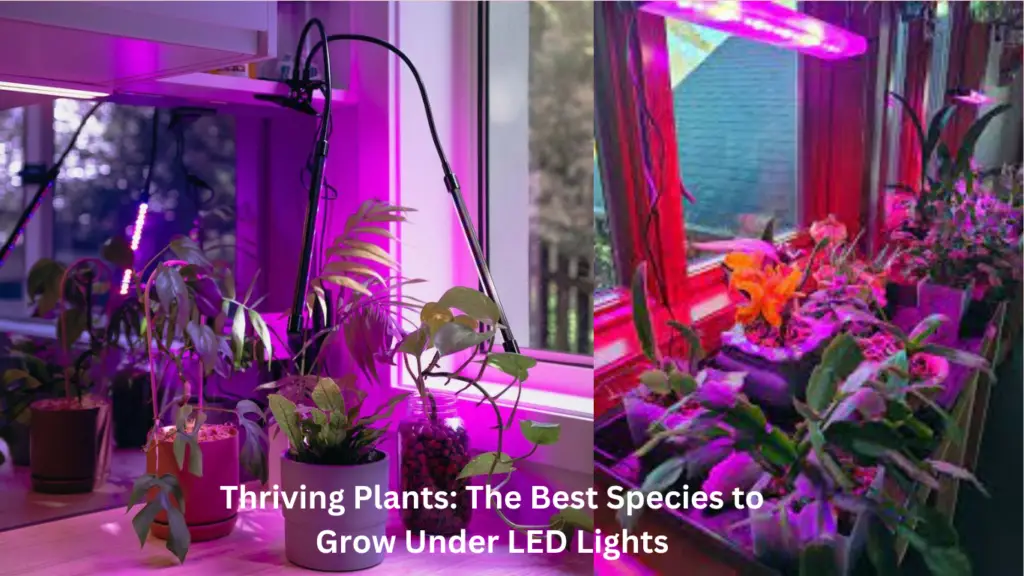
LED lights have revolutionized indoor gardening by providing a highly efficient and effective lighting solution for Thriving plants. Compared to traditional fluorescent and incandescent lights, LED lights offer numerous benefits for indoor plant growth. One of the key advantages is their energy efficiency. LED lights consume significantly less energy while producing the same or even better light output, making them a more sustainable option for indoor gardening. Additionally, LED lights have a longer lifespan, reducing the need for frequent replacement and lowering maintenance costs.
In addition to their energy efficiency, LED lights also emit specific wavelengths of light that are ideal for promoting plant growth. Unlike other lighting options, LED lights can be customized to emit the precise light spectrum that Thriving plants need for photosynthesis. This means that gardeners can adjust the light output to match the specific requirements of different plant species or growth stages. Whether it’s providing the right balance of blue and red light for vegetative growth or optimizing the light spectrum for flowering and fruiting, LED lights allow for precise control over the lighting conditions, resulting in healthier and more productive plants.
• LED lights consume significantly less energy while producing the same or better light output
• LED lights have a longer lifespan, reducing the need for frequent replacement and lowering maintenance costs
• LED lights can be customized to emit specific wavelengths of light ideal for promoting plant growth
• Gardeners can adjust the light output to match the specific requirements of different plant species or growth stages
• LED lights allow for precise control over lighting conditions, resulting in healthier and more productive Thriving plants
Factors to Consider When Choosing LED Lights for Growing Thriving Plants
When it comes to choosing LED lights for growing plants, there are several factors that need to be carefully considered. One of the first things to take into account is the light spectrum emitted by the LED lights. Different stages of plant growth require different wavelengths of light, so it is important to select LED lights that offer a wide and adjustable spectrum. This will allow you to provide your Thriving plants with the exact light they need at each stage of their development.
Another crucial factor to consider is the light intensity and duration provided by the LED lights. Thriving Plants require a certain level of brightness for photosynthesis, and the intensity of the light should be adjustable to accommodate different plant species and growth stages. Similarly, the duration of light exposure is important as plants need a certain number of hours of light each day to thrive. It is important to select LED lights that allow for customization of both intensity and duration to meet the specific needs of your plants.
Furthermore, it is essential to ensure that the chosen LED lights are suitable for the size of your growing area. Different LED light fixtures have varying coverage areas and hanging heights, so it is crucial to consider the dimensions of your space and the number of plants you intend to grow. This will ensure that the light emitted by the LED fixtures can adequately cover and reach all your Thriving plants, promoting even growth and avoiding any light deficiency or excess issues.
Additionally, energy efficiency should be taken into consideration when choosing LED lights for plant growth. LED lights are known for their energy-saving capabilities, so selecting energy-efficient fixtures will not only reduce your electricity costs but also contribute to a more environmentally friendly approach to indoor gardening.
Overall, selecting the right LED lights for growing Thriving plants requires careful consideration of factors such as light spectrum, intensity and duration, coverage area, and energy efficiency. By taking these aspects into account, you can ensure that your Thriving plants receive the optimal conditions for growth and achieve healthy and vibrant results in your indoor garden.
• Light spectrum emitted by the LED lights should be wide and adjustable to meet the different wavelengths needed for each stage of plant growth.
• Light intensity and duration should be adjustable to accommodate different plant species and growth stages.
• Consider the size of your growing area and the number of plants you intend to grow when selecting LED lights, ensuring adequate coverage and reach for all plants.
• Choose energy-efficient LED lights to reduce electricity costs and promote environmental sustainability.
Exploring the Optimal Light Spectrum for Plant Growth Under LED Lights
To achieve optimal plant growth, it is crucial to understand the importance of the light spectrum provided by LED lights. LED lights have revolutionized indoor plant growth by allowing growers to tailor the light spectrum specifically to meet the needs of different plant species.
Different colors within the light spectrum have varying effects on Thriving plants. For instance, blue light is essential for promoting healthy foliage and compact growth, while red light stimulates flowering and fruiting. By manipulating the ratio of blue and red light, growers can control the growth and development of their plants.
Research has shown that a ratio of approximately 1:1 between blue and red light provides balanced growth for most Thriving plants. However, some plant species have specific requirements. For example, leafy greens such as lettuce and spinach thrive with a higher proportion of blue light, while flowering plants like tomatoes benefit from a higher ratio of red light.
In addition to blue and red light, other wavelengths in the light spectrum, such as green and far-red light, also play a role in plant growth. Green light has a minimal effect on plant growth but can enhance the visual appeal of Thriving plants. Far-red light, on the other hand, affects various physiological processes, including seed germination and flowering.
By understanding the optimal light spectrum for plant growth, growers can fine-tune their LED lighting systems to provide the specific wavelengths necessary for healthy and vigorous Thriving plants. This customization allows for greater control over the growth and development of plants, leading to higher yields and overall success in indoor gardening.
• Blue light promotes healthy foliage and compact growth
• Red light stimulates flowering and fruiting
• A ratio of approximately 1:1 between blue and red light provides balanced growth for most Thriving plants
• Leafy greens thrive with a higher proportion of blue light
• Flowering Thriving plants benefit from a higher ratio of red light
• Green light has minimal effect on plant growth but enhances visual appeal
• Far-red light affects physiological processes such as seed germination and flowering
The Importance of Light Intensity and Duration for Thriving Plants
Light intensity and duration play a vital role in the overall health and growth of Thriving plants in indoor settings. When it comes to thriving plants, understanding the importance of optimizing these factors is crucial for gardening enthusiasts.
Light intensity refers to the amount of light energy that reaches the plants. Different plant species have varying requirements, and finding the right balance is key to their success. Insufficient light intensity can lead to weak and leggy plants with elongated stems, while excessive light intensity can cause burning and damage to leaves. It is important to consider factors such as the plant’s natural habitat and growth stage when determining the appropriate light intensity. Providing the optimal level of light will ensure proper photosynthesis, which is essential for the Thriving plants to produce energy and grow.
In addition to light intensity, the duration for which plants are exposed to light also affects their growth and development. Thriving Plants typically require a certain number of hours of light and darkness each day, known as the light cycle. This cycle helps regulate essential processes such as flowering, fruiting, and overall plant health. Insufficient or excessive light duration can disrupt these processes and lead to stunted growth or poor yields. By understanding the specific light cycle requirements of different plant species, gardeners can maximize the potential for thriving plants.
In conclusion, light intensity and duration are key factors for the success of indoor plants. Finding the right balance of these elements is crucial for optimal plant growth and health. By providing suitable light intensity and duration, gardening enthusiasts can create a favorable environment for their plants to thrive. Stay tuned for the next section, where we will explore how to select the right LED light fixtures for different plant species.
• Insufficient light intensity can result in weak and leggy plants with elongated stems
• Excessive light intensity can cause burning and damage to leaves
• Consider the plant’s natural habitat and growth stage when determining the appropriate light intensity
• Optimal light levels ensure proper photosynthesis for energy production and growth
• Light duration affects processes such as flowering, fruiting, and overall plant health
• Plants require a certain number of hours of light and darkness each day, known as the light cycle
• Insufficient or excessive light duration can lead to stunted growth or poor yields
• Understanding specific light cycle requirements maximizes potential for thriving plants
In conclusion:
– Light intensity and duration are crucial factors for indoor plant success
– Finding the right balance is essential for optimal growth and health
– Suitable levels create a favorable environment for plants to thrive
Selecting the Right LED Light Fixtures for Different Thriving Plants Species
When selecting LED light fixtures for different plant species, it is important to consider the specific light requirements of each plant. Different plants have varying needs when it comes to light intensity, spectrum, and duration. For example, leafy greens like lettuce and spinach thrive under cooler temperature lights with a spectrum between 400 to 500 nm (nanometers), which is in the blue range. On the other hand, flowering plants such as roses and orchids require a broader spectrum that includes red light in the range of 600 to 700 nm to promote blooming and fruiting.
In addition to spectrum, light intensity plays a crucial role in plant growth. Thriving plants, like succulents and cacti, can tolerate higher light intensities, while others, like ferns and certain herbs, prefer lower light levels. It is important to understand the light requirements of each plant species to ensure they receive the appropriate amount of light for optimal growth. Consulting a lighting guide or seeking advice from experts can help in making informed decisions about the right LED light fixtures for different plant species.
• Different plants have varying light requirements, including intensity, spectrum, and duration.
• Leafy greens like lettuce and spinach thrive under cooler temperature lights with a spectrum between 400 to 500 nm (blue range).
• Flowering plants such as roses and orchids require a broader spectrum that includes red light in the range of 600 to 700 nm for blooming and fruiting.
• Light intensity is crucial for plant growth; some plants can tolerate higher intensities while others prefer lower levels.
• Understanding the specific light requirements of each plant species is essential for optimal growth.
• Consulting lighting guides or seeking advice from experts can help in selecting the right LED light fixtures.
Examining the Role of Light Color Temperature in Thriving Plants Development
Light color temperature plays a crucial role in the development of plants. Different color temperatures have varying effects on plant growth and development, making it essential for growers to understand and utilize the appropriate light spectrum. The color temperature of light is measured in Kelvin (K), with warm white light having a lower color temperature (around 2,700K) and cool white light having a higher color temperature (around 6,500K).
In the early stages of plant growth, a higher color temperature, such as cool white light, is beneficial. This type of light spectrum promotes compact, sturdy growth and helps to prevent elongation of stems. As the Thriving plants mature and transition to the flowering or fruiting stage, a lower color temperature, such as warm white light, is ideal. This spectrum enhances the development of flowers and fruits, promoting better yield and overall plant quality. By understanding the role of light color temperature in plant development, growers can optimize their indoor gardening environments and maximize the potential of their plants.
• Different color temperatures have varying effects on plant growth and development
• Warm white light has a lower color temperature (around 2,700K)
• Cool white light has a higher color temperature (around 6,500K)
• Higher color temperature is beneficial in the early stages of plant growth
• Cool white light promotes compact, sturdy growth and prevents elongation of stems
• Lower color temperature is ideal during the flowering or fruiting stage
• Warm white light enhances flower and fruit development for better yield and quality
• Understanding light color temperature helps optimize indoor gardening environments
Understanding Thriving Plants the Relationship Between Light and Photosynthesis
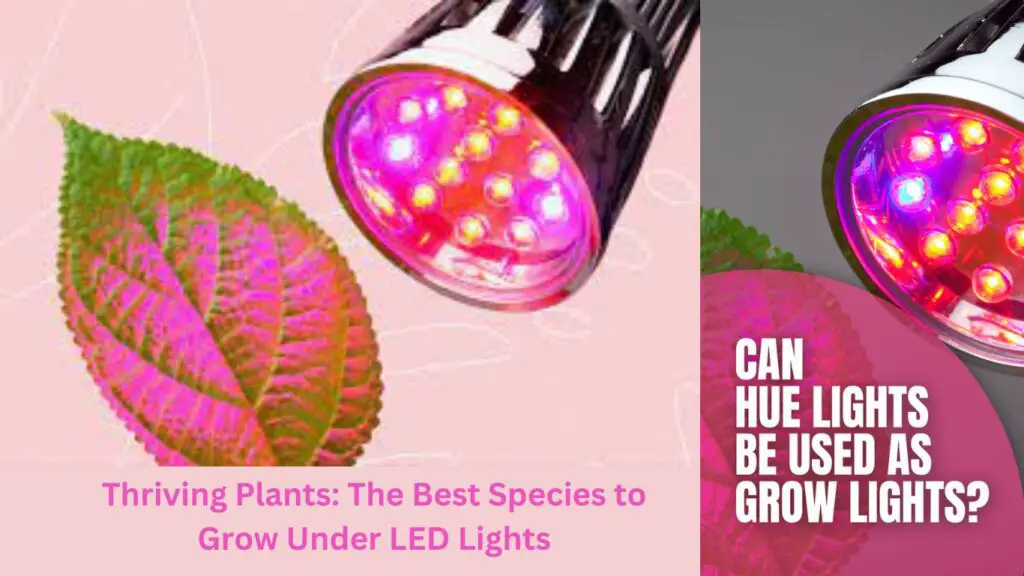
Photosynthesis is the fundamental process by which plants convert light energy into chemical energy, fueling their growth and development. A crucial aspect of this process is understanding the relationship between light and photosynthesis. The quality, intensity, and duration of light all play significant roles in determining the efficiency and productivity of photosynthesis in Thriving plants.
Light quality refers to the specific wavelengths or colors of light that are absorbed by plants during photosynthesis. Plants primarily utilize red and blue light for photosynthesis, while green light is not as readily absorbed and is instead reflected, giving leaves their green appearance. This understanding has led to the development of LED lights that emit targeted wavelengths to optimize plant growth. Research has shown that by manipulating the light spectrum, it is possible to influence important plant processes such as leaf expansion, stem elongation, and flowering. By tailoring the light spectrum to the specific needs of different plant species, indoor gardeners can maximize photosynthesis and achieve optimal plant growth.
• Light quality refers to the specific wavelengths or colors of light that are absorbed by Thriving plants during photosynthesis.
• Plants primarily utilize red and blue light for photosynthesis, while green light is not as readily absorbed and is instead reflected.
• LED lights have been developed to emit targeted wavelengths to optimize plant growth.
• Manipulating the light spectrum can influence important plant processes such as leaf expansion, stem elongation, and flowering.
• Tailoring the light spectrum to the specific needs of different plant species can maximize photosynthesis and achieve optimal plant growth.
Best Practices for Positioning LED Lights to Maximize Thriving Plants Growth
Positioning LED lights correctly is crucial for maximizing plant growth. By following best practices, you can ensure that your plants receive the optimal amount and quality of light they need to thrive.
Firstly, it’s important to consider the distance between the LED lights and the plants. Generally, it’s recommended to position the lights between 6-12 inches from the plant canopy. This distance allows for sufficient light penetration while minimizing the risk of heat damage. However, this distance may vary depending on factors such as the specific plant species and the light intensity of your LED fixtures. Monitoring your plants closely and adjusting the distance accordingly is crucial for achieving optimal results.
In addition to distance, the angle at which the LED lights are positioned also plays a role in maximizing plant growth. Angling the lights slightly downwards towards the plants ensures that the light is evenly distributed across the canopy, preventing shading and promoting uniform growth. Consider using adjustable mounting options to easily fine-tune the angle of your LED lights as your plants grow.
By following these best practices for positioning LED lights, you can create an optimal environment for your plants to thrive. However, it’s important to note that different plant species may have specific light requirements, so it’s always a good idea to research and understand the specific needs of your plants.
• Position LED lights between 6-12 inches from the plant canopy to ensure sufficient light penetration and minimize heat damage.
• Adjust the distance based on factors such as plant species and light intensity of your LED fixtures for optimal results.
• Angle the LED lights slightly downwards towards the plants to evenly distribute light across the canopy and prevent shading.
• Consider using adjustable mounting options to fine-tune the angle of your LED lights as your plants grow.
• Research and understand specific light requirements of different plant species for best results.
How to Determine the Ideal Light Distance for Your Thriving Plants
Determining the ideal light distance for your plants is crucial for their overall growth and development. Placing the LED lights too close to the plants can lead to excessive heat and damage the leaves, while keeping them too far can result in insufficient light intensity for photosynthesis. Finding the right balance is key to ensuring optimal plant health and maximizing your yields.
To determine the ideal light distance, you first need to consider the specific light requirements of your plant species. Different plants have varying light intensity preferences, and it’s important to understand their specific needs. A good rule of thumb is to refer to the manufacturer’s recommendations for your LED lights, as they often provide guidelines for the recommended distance based on the specific model you’re using.
However, it’s important to note that these recommendations are not always foolproof as they may not consider other factors such as ambient temperature and humidity levels. Therefore, it’s vital to closely monitor your plants and make adjustments accordingly. Start by placing the LED lights at the recommended distance and observe the plants closely. If you notice signs of light burn or stress, such as wilting or leaf discoloration, you need to increase the distance. On the other hand, if you see signs of inadequate lighting, such as elongated stems or pale leaves, you may need to bring the lights closer.
Regularly monitoring your plants and adjusting the light distance accordingly will help you strike the right balance and provide your plants with the ideal light conditions for their growth. Remember, every plant is unique, and it’s important to cater to their specific needs to achieve the best possible results. So, take the time to observe and fine-tune your lighting setup, and you’ll be rewarded with thriving and healthy plants.
• Determine the specific light requirements of your plant species
• Refer to the manufacturer’s recommendations for LED lights distance
• Monitor plants closely and make adjustments as needed
• Increase distance if signs of light burn or stress are observed
• Bring lights closer if signs of inadequate lighting are seen
• Regularly monitor and adjust light distance for optimal results
The Role of Light Cycles in Encouraging Plant Health and Yield
Light cycles play a critical role in supporting the health and yield of indoor plants. By mimicking the natural changes in light that occur throughout the day and night, we can stimulate optimal growth and development.
During the vegetative stage, plants require longer periods of light to encourage vigorous leaf and stem growth. Typically, a light cycle of 18-24 hours of continuous light is recommended. This extended exposure to light provides plants with the energy they need to engage in photosynthesis and produce essential nutrients.
On the other hand, during the flowering stage, plants benefit from a shorter light cycle, typically around 12 hours of light and 12 hours of darkness. This shift in light duration triggers the plants’ internal flowering signals, prompting the formation of buds and the initiation of the reproductive phase.
By carefully controlling the light cycle, we can manipulate plant growth and promote optimal health and yield. However, it’s crucial to strike a balance and provide plants with the right amount of light exposure during each stage of their growth. Experimentation and careful observation of plant responses can help us fine-tune the light cycle to maximize plant health and productivity.
• During the vegetative stage, plants require longer periods of light (18-24 hours) to encourage leaf and stem growth.
• Extended exposure to light during this stage provides plants with the energy needed for photosynthesis and nutrient production.
• In the flowering stage, a shorter light cycle (12 hours of light and 12 hours of darkness) is recommended.
• This shift in light duration triggers internal flowering signals, leading to bud formation and reproductive phase initiation.
• Carefully controlling the light cycle allows for manipulation of plant growth and promotion of optimal health and yield.
• It is important to strike a balance between providing enough light exposure during each growth stage.
• Experimentation and observation can help fine-tune the light cycle for maximum plant health and productivity.
Best LED Light Settings for Different Stages of Thriving Plants Growth
Different stages of plant growth require specific LED light settings to ensure optimal growth and development. During the vegetative stage, which is characterized by rapid leaf and stem growth, plants benefit from high levels of blue light. Blue light with a wavelength of around 400-500 nm promotes compact and bushy growth by stimulating the production of chlorophyll. A light spectrum with a higher ratio of blue light to red light, such as a 3:1 ratio, is ideal for this stage.
As plants transition into the flowering stage, where they produce flowers and fruits, the light requirements change. During this stage, plants require a higher ratio of red light to blue light. Red light with a wavelength of around 600-700 nm encourages flowering and fruiting by regulating photoreceptors responsible for these processes. A light spectrum with a 9:1 ratio of red light to blue light is considered optimal for the flowering stage. By adjusting the LED light settings to match the specific needs of each stage, gardeners can maximize plant growth and yield.
• During the vegetative stage, use a light spectrum with a higher ratio of blue light to red light (3:1).
• Blue light with a wavelength of around 400-500 nm promotes compact and bushy growth.
• This stimulates the production of chlorophyll, resulting in rapid leaf and stem growth.
• Adjusting LED light settings to provide high levels of blue light is crucial for optimal growth during this stage.
• As plants enter the flowering stage, adjust the LED light settings to provide a higher ratio of red light to blue light (9:1).
• Red light with a wavelength of around 600-700 nm regulates photoreceptors responsible for flowering and fruiting.
• This encourages plants to produce flowers and fruits, leading to increased yield.
• By providing an appropriate balance between red and blue lights, gardeners can promote successful flowering and fruiting.
By understanding the specific needs of each stage of plant growth and adjusting LED lighting accordingly, gardeners can effectively support their plants’ development.
Exploring the Impact of LED Lights on Nutrient Uptake and Growth Rate for Thriving Plants
The use of LED lights in indoor gardening has revolutionized the way we grow plants. One of the key benefits of LED lights is their ability to influence nutrient uptake and growth rate in plants. LED lights emit specific wavelengths of light that are essential for photosynthesis, the process by which plants convert light energy into chemical energy to fuel their growth.
Research has shown that LED lights can optimize nutrient absorption in plants, leading to faster growth and improved overall health. The right combination of red and blue light wavelengths can enhance the process of photosynthesis, enabling plants to efficiently convert nutrients into energy. This not only boosts plant growth but also improves the nutritional value of the harvested produce.
Moreover, LED lights can be customized to provide specific light spectrums that are tailored to the needs of different plant species. For example, plants with high light requirements, such as herbs and leafy greens, thrive under LED lights that emit a higher proportion of blue light. On the other hand, flowering plants and fruits benefit from LED lights that emit a higher proportion of red light.
When selecting LED lights for indoor gardening, it is crucial to consider the light intensity and duration. Different plants have specific light intensity requirements, and providing the right amount of light is essential for optimal growth. Additionally, the duration of light exposure should mimic natural daylight cycles to ensure healthy plant development.
In conclusion, LED lights have a profound impact on nutrient uptake and growth rate in indoor plants. By providing the right combination of light wavelengths, intensity, and duration, LED lights can significantly enhance plant growth and improve the overall health of the garden. Understanding these factors and selecting the appropriate LED lighting system will help gardening enthusiasts achieve remarkable results in their indoor gardens.
– LED lights emit specific wavelengths of light that are essential for photosynthesis, leading to improved nutrient uptake and growth rate in plants.
– The right combination of red and blue light wavelengths can enhance the process of photosynthesis, allowing plants to efficiently convert nutrients into energy.
– Customizable LED lights provide tailored light spectrums for different plant species, optimizing their growth and development.
– Plants with high light requirements thrive under LED lights that emit a higher proportion of blue light, while flowering plants and fruits benefit from a higher proportion of red light.
– It is crucial to consider the intensity and duration of LED lights when selecting them for indoor gardening. Different plants have specific light intensity requirements, and mimicking natural daylight cycles is important for healthy plant development.
– By providing the right combination of light wavelengths, intensity, and duration, LED lights significantly enhance plant growth and improve overall garden health.
Overcoming Challenges: Troubleshooting Common LED Lighting Issues for Thriving Plants
Troubleshooting Common LED Lighting Issues
As with any technology, LED lighting for indoor plants can come with its fair share of challenges. However, armed with knowledge and a few troubleshooting techniques, you can overcome these hurdles and ensure optimal growth for your plants.
One common issue faced by many gardeners is inadequate light intensity. Insufficient light can result in leggy and weak plants, as they stretch and reach for more light. To solve this problem, make sure to adjust the positioning of your LED lights so that they are closer to the plants. This will help to provide the necessary intensity for healthy growth.
Another common challenge is excessive heat produced by LED lights. While LED lights are known for their energy efficiency, they still generate some heat. This can cause a buildup of heat in your indoor gardening space, potentially harming your plants. To mitigate this, consider installing a fan or ventilation system to help dissipate the heat. Additionally, you can also use specific LED lighting fixtures that are designed with heat dissipation features to minimize any potential issues.
By being proactive and addressing these common LED lighting issues, you can ensure that your indoor plants thrive and flourish under the right light conditions. Stay tuned for more tips and tricks to make the most of your LED lights for indoor gardening success!
– Adjust the positioning of LED lights closer to plants for adequate light intensity
– Install a fan or ventilation system to dissipate excess heat generated by LED lights
– Consider using LED lighting fixtures with heat dissipation features to minimize potential issues
Creative Ways to Use LED Lights in Indoor Thriving Plants Displays
Indoor plant displays are not only a great way to add a touch of nature to your living space, but they also offer a wide range of opportunities for creativity. LED lights can be used in creative ways to enhance the visual appeal and overall ambiance of your indoor plant displays. One creative way to use LED lights is by incorporating different colors to create a stunning visual effect. By using LED lights with adjustable color settings, you can experiment with different combinations to create a captivating display that complements your home decor. Whether you prefer a soothing and serene ambiance or a vibrant and energetic atmosphere, LED lights can help you achieve the desired effect. Additionally, you can strategically position the lights to highlight specific plants or create interesting patterns and shadows, adding an artistic touch to your indoor plant displays.
Another creative way to use LED lights in indoor plant displays is by creating a focal point. By positioning LED lights above or around a particularly captivating plant or arrangement, you can draw attention and create a visually striking centerpiece. This not only adds a dynamic element to your indoor space but also allows you to showcase your favorite plants in a unique and eye-catching manner. Additionally, LED lights can be used to highlight the intricate details and textures of plants, making them the center of attention. Whether you have a collection of succulents, flowering plants, or lush green foliage, incorporating LED lights can elevate their beauty and make them the star of the show. So, don’t be afraid to get creative with LED lights and explore different ways to enhance your indoor plant displays. The possibilities are endless, and the results will surely leave you and your visitors in awe.
• Experiment with different color combinations using LED lights to create a captivating display that complements your home decor.
• Use adjustable LED lights to achieve a soothing and serene ambiance or a vibrant and energetic atmosphere.
• Strategically position the lights to highlight specific plants or create interesting patterns and shadows, adding an artistic touch to your indoor plant displays.
• Create a focal point by positioning LED lights above or around a particularly captivating plant or arrangement, drawing attention and creating a visually striking centerpiece.
• Showcase your favorite plants in a unique and eye-catching manner by incorporating LED lights as highlights for their intricate details and textures.
• Elevate the beauty of succulents, flowering plants, or lush green foliage by incorporating LED lights into their display.
Achieving Optimal Plant Growth with LED Lights: Case Studies and Success Stories on Thriving Plants
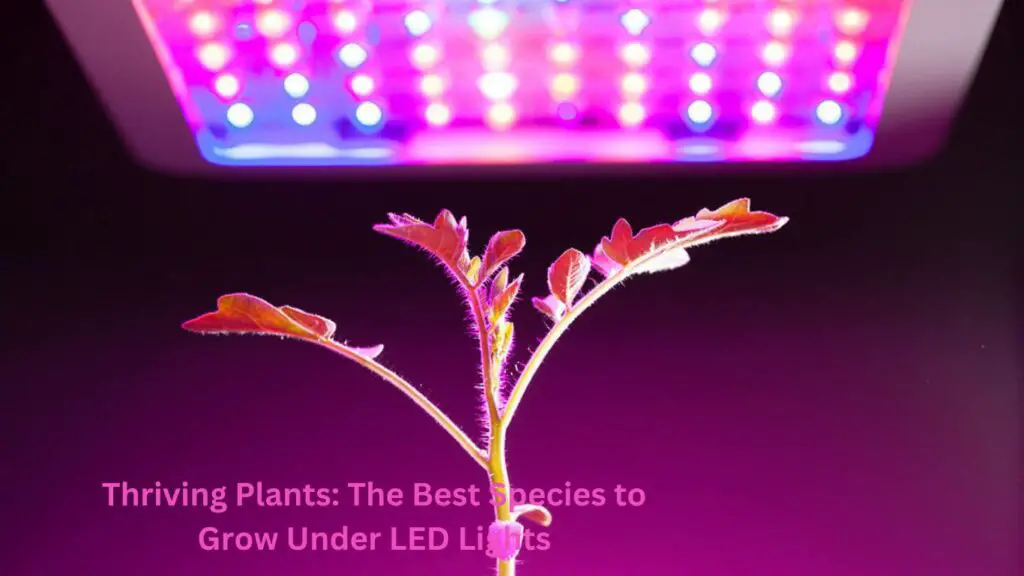
LED lights have gained significant recognition and popularity among indoor gardeners due to their ability to promote optimal plant growth. Numerous case studies and success stories have showcased the remarkable benefits of using LED lights for cultivating a wide variety of plants.
In one case study conducted by the University of California, researchers examined the effect of LED lights on the growth of lettuce plants. The study found that lettuce plants grown under LED lights exhibited faster growth rates, increased chlorophyll content, and higher yields compared to plants grown under traditional fluorescent lights. This success story serves as a testament to the efficiency and effectiveness of LED lights in promoting healthy plant development.
Similarly, a success story from a commercial hydroponic farm in Japan highlights the impressive results achieved with LED lighting. By utilizing LED lights specifically designed for plant growth, the farm was able to produce high-quality tomatoes with vibrant color and exceptional taste. The LED lights provided the perfect spectrum and intensity of light necessary for optimal photosynthesis, resulting in outstanding plant health and yield.
These case studies and success stories validate the immense potential of LED lights in achieving optimal plant growth. As more gardeners explore the possibilities of indoor gardening, the use of LED lights continues to pave the way for successful cultivation and healthy, abundant plant life.
• LED lights have gained recognition among indoor gardeners for promoting optimal plant growth.
• A case study by the University of California showed that lettuce plants grown under LED lights had faster growth rates, increased chlorophyll content, and higher yields compared to fluorescent lights.
• A success story from a commercial hydroponic farm in Japan demonstrated that LED lighting resulted in high-quality tomatoes with vibrant color and exceptional taste.
• These case studies and success stories highlight the potential of LED lights for achieving optimal plant growth.
• The use of LED lights is paving the way for successful cultivation and healthy, abundant plant life in indoor gardening.
Here are two tables showcasing some plants that are known to Thriving Plants under LED lights, categorized based on their growth characteristics:
Table 1: Low-Light Thriving Plants Under LED Lights
| Plant Species | Light Requirements | Growth Type | Notes |
|---|---|---|---|
| Snake Plant (Sansevieria) | Low to Moderate Light | Low Maintenance | Tolerates low light conditions exceptionally well. |
| Pothos (Epipremnum aureum) | Low to Moderate Light | Fast-growing, Trailing | Ideal for hanging baskets; adaptable to various light levels. |
| ZZ Plant (Zamioculcas zamiifolia) | Low to Moderate Light | Low Maintenance | Thrives in low light, drought-tolerant. |
| Peace Lily (Spathiphyllum) | Low to Moderate Light | Moderate Growth | Excellent air purifier; suitable for low light settings. |
Table 2: High-Light Thriving Plants Under LED Lights
| Plant Species | Light Requirements | Growth Type | Notes |
|---|---|---|---|
| Succulents (e.g., Echeveria, Aloe Vera) | High Light | Slow to Moderate Growth | Well-draining soil is crucial; provide bright, direct light. |
| Basil (Ocimum basilicum) | High Light | Fast-growing, Herb | Requires ample light for robust growth and flavor. |
| Tomatoes (Solanum lycopersicum) | High Light | Moderate to Fast Growth | Ideal for fruiting plants; needs intense light for flowering. |
| Herbs (Rosemary, Thyme, Oregano) | High Light | Moderate Growth | Culinary herbs benefit from high light levels. |
Notes:
- LED lights with a color temperature around 6500K (cool white) are suitable for promoting vegetative growth, while those around 2700K (warm white) are beneficial during flowering and fruiting stages.
- The growth type (slow, moderate, fast) may vary based on factors such as specific species, environmental conditions, and care practices.
- Always consider the specific light intensity and duration requirements for each plant when using LED lights.
These tables provide a starting point for selecting plants that thrive under LED lights. Adjustments to lighting intensity, duration, and placement can further optimize the growth of these plants in indoor environments.
Expert Tips for Maintaining Healthy Thriving Plants Under LED Lights
To maintain healthy plants under LED lights, it is important to understand and meet their specific light requirements. Different plants have varying optimal light intensity and duration needs. It is crucial to research and select the right LED light fixtures based on the specific plant species you are growing.
One expert tip is to position the LED lights at the proper distance from the plants. This distance can vary depending on the light intensity and the growth stage of the plants. Monitoring the distance and adjusting it accordingly will ensure that the plants receive the right amount of light for optimal growth.
Another crucial aspect to consider is the light spectrum. LED lights allow for precise control over the wavelengths emitted, enabling gardeners to tailor the light spectrum for specific plant needs. Research the optimal light spectrum for the plants you are growing and make adjustments as necessary.
Additionally, maintaining a consistent light cycle is essential for plant health. Most plants require a combination of darkness and light to thrive. Mimicking natural light patterns by providing a consistent light-on and light-off schedule aids in regulating plant growth and development.
Remember that while LED lights provide numerous benefits, they are not a replacement for proper care and environmental conditions. Regular monitoring of moisture levels, nutrient uptake, and other crucial factors will help ensure the overall health and well-being of the plants. By implementing these expert tips, gardeners can effectively maintain healthy plants under LED lights and maximize their growth potential. Stay tuned for more tips and insights on how to optimize indoor gardening with LED lights.
• Research and select the right LED light fixtures based on the specific plant species you are growing.
• Position the LED lights at the proper distance from the plants, adjusting as necessary for optimal growth.
• Tailor the light spectrum emitted by LED lights to meet the specific needs of your plants.
• Maintain a consistent light cycle by providing a regular schedule of light-on and light-off periods.
• Regularly monitor moisture levels, nutrient uptake, and other crucial factors for overall plant health.
Taking Your Indoor Gardening to the Next Level: Advanced
Advanced indoor gardening involves a higher level of precision and expertise to achieve exceptional results. It requires a deep understanding of plant biology, environmental factors, and advanced technologies to cultivate healthy and thriving plants. By implementing advanced techniques, you can enhance plant growth, increase yield, and create stunning indoor gardens that will impress even the most discerning gardening enthusiasts.
One key aspect of advanced indoor gardening is the use of advanced lighting systems, such as LED lights. LED lights offer numerous benefits, including energy efficiency, long lifespan, and customizable light spectrums. These lights can be adjusted to provide the optimal light spectrum for different stages of plant growth, promoting photosynthesis and maximizing nutrient uptake. With the ability to manipulate light intensity, duration, and color temperature, you can create ideal growing conditions for a wide range of plant species. By harnessing the power of LED lights, you can take your indoor gardening to new heights and achieve remarkable results.
• LED lights offer energy efficiency, long lifespan, and customizable light spectrums
• Adjusting LED lights can provide optimal light spectrum for different stages of plant growth
• Manipulating light intensity, duration, and color temperature creates ideal growing conditions
• Harnessing the power of LED lights can achieve remarkable results in indoor gardening
Can LED lights be used for all types of indoor Thriving Plants?
Yes, LED lights can be used for a wide variety of indoor plants. Different plants have different light requirements, so it’s important to choose the right LED light fixtures and settings based on the specific needs of your plants.
How do LED lights impact the growth rate of indoor Thriving Plants?
LED lights have a positive impact on the growth rate of indoor plants. They provide the necessary light spectrum and intensity for photosynthesis, which is crucial for plant growth. LED lights can help plants grow faster and healthier compared to traditional lighting options.
Can LED lights replace natural sunlight for indoor Thriving Plants?
While LED lights can mimic the spectrum and intensity of natural sunlight, they cannot completely replace it. Natural sunlight provides a wider range of light wavelengths that are beneficial for plant growth. However, LED lights can supplement natural sunlight or be used as the sole light source for indoor plants.
Do LED lights produce heat that can harm Thriving Plants?
LED lights produce significantly less heat compared to traditional lighting options, such as incandescent or fluorescent lights. This reduced heat emission makes LED lights safer to use for indoor plants as it minimizes the risk of heat damage or burns to the plants.
Are there any safety precautions to consider when using LED lights for indoor gardening?
When using LED lights for indoor gardening, it’s important to ensure that the lights are properly installed and secured. Avoid exposing the lights to excessive moisture or water to prevent electrical hazards. Additionally, make sure to follow the manufacturer’s instructions and recommendations for safe and efficient use of LED lights.
Can LED lights be used for all stages of Thriving Plants growth?
Yes, LED lights can be used for all stages of plant growth, including germination, vegetative growth, and flowering. By adjusting the light spectrum, intensity, and duration, you can optimize the LED light settings to meet the specific needs of each stage of plant growth.
Will using LED lights increase my energy consumption?
LED lights are known for their energy efficiency. They consume significantly less energy compared to traditional lighting options, such as incandescent or fluorescent lights. By using LED lights for indoor gardening, you can save energy and reduce your overall energy consumption.
Are there any specific maintenance requirements for LED lights used in indoor gardening?
LED lights used in indoor gardening require minimal maintenance. Regularly dusting the lights and ensuring proper ventilation can help prevent any potential issues with overheating. It’s also important to monitor the lifespan of the LED lights and replace them when necessary to maintain optimal plant growth.
Can LED lights be used in conjunction with other lighting sources?
Yes, LED lights can be used in conjunction with other lighting sources, such as natural sunlight or fluorescent lights. By combining different lighting sources, you can provide a more diverse and balanced light spectrum for your indoor plants, enhancing their overall growth and development.

